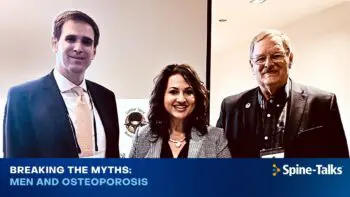Spinal deformity correction is a surgical procedure aimed at correcting abnormal curvature or misalignment of the spine. These deformities can include conditions such as scoliosis (sideways curvature), kyphosis (forward curvature), or other spine misalignments. The procedure involves a combination of techniques to realign the spine, stabilize it, and, in many cases, fuse the vertebrae to prevent future deformity.
Purpose of Spinal Deformity Correction
What It Treats:
- Scoliosis: A sideways curvature of the spine, commonly diagnosed in adolescents but can affect adults (degenerative scoliosis).
- Kyphosis: Excessive forward curvature of the upper back.
- Flatback Syndrome: Loss of normal lumbar lordosis leading to difficulty standing upright.
- Congenital or Degenerative Deformities: These include birth defects, trauma, or age-related changes that cause spinal deformities.
Goal of Spinal Deformity Correction:
The goal of spinal deformity correction is to restore alignment of the spine, alleviate pain, improve posture and mobility, and prevent further progression of the deformity.
Candidates for Spinal Deformity Correction
- Ideal Candidates:
- Patients with moderate to severe spinal deformities, often associated with pain, functional limitations, or progressive worsening of the curve.
- Patients who have not responded to non-surgical treatments like bracing, physical therapy, or pain management.
- Individuals experiencing neurological symptoms (e.g., numbness, weakness, or bowel/bladder issues) due to spinal cord or nerve compression caused by deformity.
- Not Ideal Candidates:
- Patients with mild deformities that are well-managed with non-surgical treatments.
- Patients with significant underlying health conditions that increase surgical risks.
Types of Spinal Deformity Correction Procedures
The specific procedure chosen depends on the type and severity of the spinal deformity. Some common techniques include:
- Spinal Fusion: This is the most common surgical technique for correcting spinal deformities. It involves fusing several vertebrae together using bone grafts and hardware (such as screws, rods, and plates) to hold them in place. This helps straighten the spine and prevents further curvature.
- Osteotomy: In severe deformities, an osteotomy may be performed, where parts of the vertebra are cut to allow for better alignment before fusion.
- Vertebral Column Resection (VCR): For complex or rigid deformities, this procedure involves removing one or more vertebrae to allow for greater correction.
- Growing Rods: In children with scoliosis or other deformities, special growing rods may be implanted to allow for continued spine growth while correcting the curvature. These rods can be lengthened periodically without additional surgery (magnetically or manually).
- Pedicle Subtraction Osteotomy (PSO): This procedure removes part of the vertebra (a wedge of bone) to correct deformities like kyphosis or flatback syndrome by restoring balance to the spine.
Procedure Overview
Anesthesia: Spinal deformity correction is performed under general anesthesia, meaning the patient is asleep throughout the surgery.
Surgical Approach: The surgeon makes an incision along the back (posterior approach), sometimes supplemented with anterior or lateral approaches to access the spine from the front or side.
Steps:
- Exposure: The muscles around the spine are moved aside to expose the vertebrae and curvature.
- Correction: Depending on the severity of the deformity, the surgeon may perform one or more of the following: osteotomies, removing vertebrae, or cutting ligaments to allow for better spine mobility and correction.
- Instrumentation: Screws, rods, and/or plates are inserted to realign the spine. The hardware acts as an internal brace, keeping the spine in the correct position.
- Spinal Fusion: Bone grafts are placed between the vertebrae to encourage the bones to grow together (fuse) over time. This fusion helps maintain long-term alignment.
- Closure: The incisions are closed with sutures or staples, and the patient is monitored for recovery.
Recovery Process
- Hospital Stay: Most patients stay in the hospital for 4-7 days following spinal deformity correction surgery. Pain is managed with medications, and physical therapy often begins early to help regain movement.
- Initial Recovery: The first few weeks after surgery are focused on wound healing and regaining mobility. Patients may need to wear a brace for support during this time.
- Rehabilitation: Physical therapy plays an essential role in recovery, focusing on strengthening the muscles around the spine, improving flexibility, and maintaining alignment. Patients will gradually increase their activity level over time.
- Full Recovery: Complete recovery from spinal deformity correction surgery can take 6-12 months. During this time, the bone grafts used in spinal fusion solidify, and the spine stabilizes.
Risks and Complications
As with any major surgery, spinal deformity correction carries some risks:
- Infection: There is a risk of infection at the surgical site or deeper in the spine.
- Nerve Damage: The spine houses many important nerves, and there is a small risk of nerve injury, leading to numbness, weakness, or paralysis.
- Blood Loss: Spinal surgery can involve significant blood loss, which may require transfusions.
- Hardware Failure: The rods, screws, or plates used in the surgery could break or move over time, which may require additional surgery.
- Non-Union: In spinal fusion, there is a risk that the bones do not fuse together properly, known as non-union, which can cause continued pain or deformity.
- Postoperative Pain: Some patients may experience pain or discomfort for months after surgery.
- Adjacent Segment Disease: Fusion surgery can place additional stress on the vertebrae above or below the fused segment, leading to degeneration in those areas over time.
Benefits of Spinal Deformity Correction
- Pain Relief: Many patients experience significant relief from pain caused by nerve compression or abnormal spine mechanics after surgery.
- Improved Mobility and Function: Correcting the deformity can improve the patient’s ability to walk, stand, and perform daily activities without discomfort.
- Better Posture and Appearance: Spinal deformity correction can restore a more natural alignment to the spine, improving posture and overall appearance.
- Prevention of Progression: Surgery can stop the progression of the spinal deformity, particularly in cases of severe scoliosis or kyphosis.
Spinal Deformity Correction in Children vs. Adults
- Children: Pediatric cases often involve scoliosis, and procedures like growing rods or vertebral tethering may be used to allow continued spinal growth while correcting the curve.
- Adults: Adult spinal deformity correction is more complex due to factors like degenerative disc disease, arthritis, and bone density issues. Fusion surgery is the treatment for adults to stabilize the spine after correction.
Summary
Spinal deformity correction is a complex surgical procedure used to treat abnormal curvatures or misalignments of the spine, such as scoliosis, kyphosis, and flatback. The surgery typically involves realigning the spine, stabilizing it with metal hardware (such as rods and screws), and performing a spinal fusion to prevent future curvature. The goal is to relieve pain, improve function, and restore proper alignment while minimizing complications. Recovery can take months, but the procedure can lead to significant improvements in quality of life for those with severe spinal deformities.



